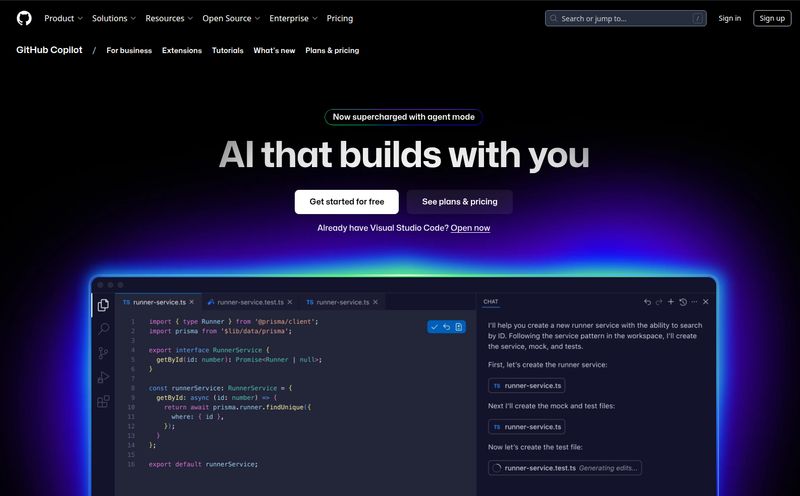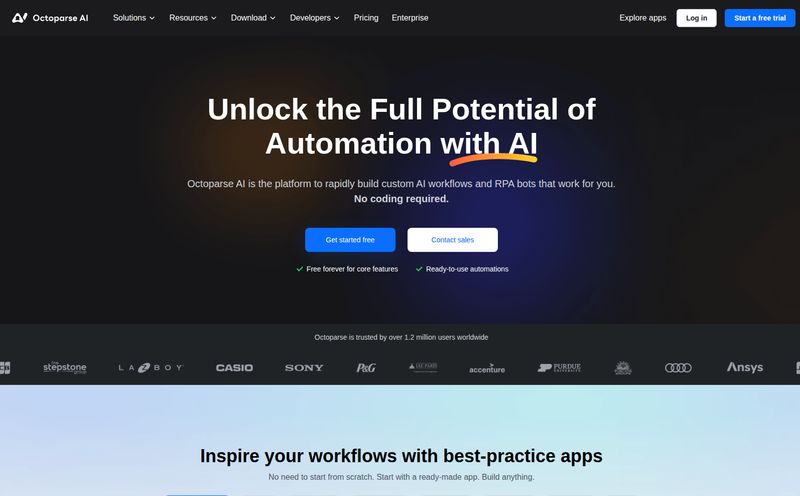I’ve been in the SEO and web development game for a long time. You get a feel for the ebb and flow of things. New tools pop up every week, each promising to be the one thing that will finally make our lives easier. Some are revolutionary. Most, well, most are just noise. So, when a new name like Soil AI trickles through the grapevine, my curiosity gets piqued.
The name itself is evocative, isn't it? Soil. It suggests something fundamental, foundational. Getting your hands dirty with the very building blocks of a website. The "AI" part adds that modern sprinkle of intrigue. Is this a tool that helps us cultivate better websites from the ground up? The initial pitch sounds familiar, yet promising: a tool for developers to interact with and modify website elements directly in the browser.
Sounds pretty handy. But as I started digging, I found something… odd. The story of Soil AI is less about the tool itself and more about the strange mystery surrounding it.
What is Soil AI (Supposedly)?
Okay, let's start with what we do know. The core idea of Soil AI is to be an in-browser editing tool. If you're a developer, a designer, or even a hands-on marketer, you know the dance. You open up Chrome DevTools (or Firefox’s equivalent), you find the element you want to change, and you start tweaking the CSS. You adjust padding, change a color, fiddle with the font size until it’s just right.
Soil AI seems to want to step into that exact space. The promise is a more streamlined workflow. Instead of just inspecting code, you'd be able to directly click, manipulate, and modify elements in a more intuitive way. Think of it as a potential layer on top of the standard dev tools we already use, perhaps something more visual, more direct. We’re talking real-time debugging and on-the-fly adjustments without the clunkiness that sometimes comes with the default inspector.
The Seductive Promise of a Smoother Workflow
Let's be honest, who wouldn't want that? The life of a front-end developer or a technical SEO is often a series of tiny, iterative changes. I can’t count the hours I've lost to refreshing a page after a minor CSS tweak, only to find I need to adjust it again. It's a constant back-and-forth between the code editor and the browser. A tool that genuinely smooths out that process is worth its weight in gold.
The stated benefits are exactly what you'd expect and hope for: quick element interaction, a streamlined development workflow, and facilitated real-time debugging. It’s the holy trinity for front-end productivity. Imagine being able to not just see the changes, but to sculpt them live on the page, maybe with AI offering suggestions. That's the dream, right?
The Reality: Hitting a Digital 404 Wall
So, with this promising idea in mind, I did what any of us would do. I went looking for it. I wanted a landing page, a demo video, a GitHub repo, a download link… anything.
And I found… well, I found a 404 error. A literal 'Not Found' page.
It's a strange place to be. Here I am, trying to review a tool, and the tool seems to have vanished before it even arrived. The digital breadcrumb trail went cold almost immediately. There’s no official website that I can find, no pricing page, no documentation. It’s like hearing a rumor of a revolutionary new car, and when you go to the dealership, the lot is empty and the building is locked.
This lines up perfectly with one of the tool's listed “cons”: limited information is available. You can't get more limited than non-existent. It leaves us with a lot of questions. Is Soil AI a project that was abandoned? Is it in a closed alpha that only a select few have access to? Or is it a component of a larger system that isn't meant to be a standalone product?
A Possible Clue in the Code?
In my search, I did come across one interesting artifact: the portfolio of a developer named Daniel Murawsky. He specializes in AI and Web3 for non-profits. A very interesting niche. Is he connected to Soil AI? It's impossible to say for sure. Maybe he's the creator. Maybe he was an early user. Or maybe his site was just an example used in a demo somewhere.
Whatever the connection, it adds another layer to the puzzle. An AI developer working with foundational web tech... it fits the narrative. But without a direct link, it remains pure speculation. A ghost in the machine.
What Soil AI Could Be (If It Ever Surfaces)
Let's indulge in a bit of wishful thinking. If Soil AI were to launch tomorrow, what would it need to do to stand out? The browser dev tool space is dominated by giants. You can't just be a slightly prettier version of Chrome DevTools and expect to win.
The "AI" in its name is the biggest clue. Here’s what I'd hope to see:
- AI-Powered Suggestions: Imagine clicking on a button and having the tool suggest better color contrast for accessibility, or cleaner CSS to achieve the same effect.
- Automated Responsive Design Checks: Instead of manually resizing the window, maybe an AI could instantly show you how an element will break on different screen sizes and offer fixes.
- Code Generation: After visually editing a component, you could have the AI generate clean, production-ready code for React, Vue, or just plain HTML/CSS. This would be a massive time-saver.
If Soil AI integrates features like these, it could move beyond being just another inspector and become a true design and development assistant. That would be something worth talking about.
The All-Important Question of Pricing
As you’ve probably guessed by now, there's zero information on pricing. Is it free? A freemium model? A monthly subscription? Your guess is as good as mine.
In the world of dev tools, we see it all. Many great tools, like the browser inspectors themselves, are free. Others, like the fantastic Polypane browser for developers, operate on a subscription. If Soil AI packs powerful AI features, I'd fully expect a monthly fee. But for now, its price is as much a mystery as its existence.
Frequently Asked Questions about Soil AI
- What is Soil AI?
- Soil AI is described as a development tool for interacting with and modifying website elements directly from the browser. It aims to streamline the web development workflow, but there is very little public information available about it.
- How is Soil AI different from Chrome DevTools?
- While it operates in the same space as Chrome DevTools, the main differentiator is likely its purported AI features. Hypothetically, it could offer intelligent suggestions and automation that go beyond the manual inspection and editing capabilities of standard dev tools. However, this is just speculation.
- Is Soil AI a free tool?
- There is currently no available information about the pricing of Soil AI. It's unknown if it will be a free tool, a one-time purchase, or based on a subscription model.
- Where can I download Soil AI?
- At the moment, there are no public download links or an official website for Soil AI. Attempts to find the tool often lead to dead ends or 404 error pages.
- Who is the creator of Soil AI?
- The creator of Soil AI is unknown. While there are some potential digital breadcrumbs, there is no confirmed individual or company behind the tool at this time.
Final Thoughts: A Promising Idea Wrapped in an Enigma
So where does that leave us with Soil AI? We have a fantastic name, a promising concept, and... not much else. It feels like a half-told story. It's a reminder that for every tool that successfully launches, there are probably a hundred more that are just ideas, abandoned projects, or private betas that never see the light of day.
I’m genuinely intrigued. I hope Soil AI does surface eventually, because the idea of an intelligent, intuitive layer over our existing dev tools is incredibly appealing. It could genuinely help us build better, more accessible, and more performant websites.
For now, it remains a mystery. A digital ghost that whispers promises of a better workflow. If you've heard anything about Soil AI, if you have a working link or some inside scoop, drop a comment below. I’d love to finally solve this little puzzle.
References and Sources
- Chrome DevTools Documentation - For comparison on standard browser development tools.
- Information on Soil AI was synthesized from a limited dataset describing its intended function and features.




